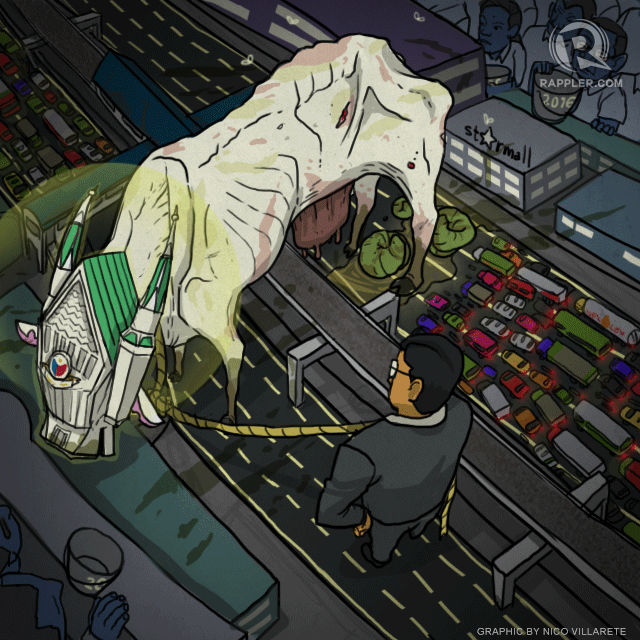The EDSA mobilization was supposed to be an open demonstration of power and strength. It was a call to all Iglesia ni Cristo (INC) brethren to protest what was described as government’s meddling in the internal affairs of the century-old church.
(READ: Filipino version of #AnimatED: Sa 2016, basag na boto ng Iglesia ni Cristo)
The call to mobilize Iglesia followers echoed as far away as Cebu and Davao, with an ambitious nationwide target of one million attending the protest actions.
INC followers are prohibited from attending rallies, seen as disruptive of the peace and the status quo. But on Thursday, August 27, after their usual church service, they were ordered to proceed to the Department of Justice to fight for faith and doctrine. They said it was a "vigil," when it was really just a euphemism for a rally, replete with a stage, blaring speakers, and tarpaulins.
Leaders spread the word that Justice Secretary Leila de Lima had issued an arrest warrant against the 8 Sanggunian or Council members named by expelled minister Isaias Samson Jr – the same man who spoke out against corruption within. In reality, no prosecutor had even been assigned to conduct a preliminary investigation.
The attempt to rally the flock was anchored on false information, which the less discerning failed or refused to see through – talk about religion being a barrier to genuine understanding and critical thought.
Agitating their followers, INC ministers said special attention was being given by De Lima to the illegal detention case filed by Samson. It was a clear case of the state interfering in the affairs of the Iglesia, they said, and this power must be taught to know its limits.
They cried persecution and demanded separation of church and state when, in fact, Iglesia leaders are known to flex their muscles and ask for appointments in government in exchange for their bloc vote every election season.
By Friday and Saturday, the second and third nights of their rally, the Iglesia had accomplished their own version of Occupy EDSA. Their numbers had swollen and local chief executives meekly provided them with extended permits, while the national government exercised maximum tolerance.
Never mind if there was slander, irreverence, and a call to join their ranks supposedly to demand justice for the fallen Special Action Force troopers in Mamasapano. “Hostess siya (She's a prostitute)!" reverberated in the intersection of Shaw Boulevard and EDSA, the comical yet egregious chanting led by supposed religious leaders who were publicly vilifying the justice secretary.
It was an incredible spectacle.

By Sunday night, August 30, Iglesia contingents were expected to flood and block the entire stretch of EDSA with 500,000. But the brethren who came were not enough to fill even half the highway that gathered up to about one to two million in the People Power Revolution of 1986.
Clearly, dissension within what used to be a tightly-knit church had manifested yet again through numbers. Disenchantment and defiance could only be the explanation for the lower-than-expected turnout. Did the district ministers not work hard enough? Or was the response simply tepid?
Politicians and candidates in 2016 surely cannot miss the significance of the INC leadership’s missteps and attempts at manipulation. We stress the leadership, and not the church itself, for the two are separate.
From where we stand, these are the central messages for those eyeing a run in 2016:
- The Iglesia is not a homogeneous behemoth.
- An INC bloc vote will be more so a myth in 2016.
- Public sympathy for the Iglesia’s leaders and their cause has weakened because of the disinformation they resorted to. This was obviously not about freedom of religion or even justice.
- Media sympathy for the Iglesia leadership who allowed intimidation and harassment of some journalists has diminished.
- Open association with Iglesia leaders can be fatal because of credibility issues.
In the end, the INC as an institution may emerge either stronger or ruined, depending on how believers respond to this present crisis.
In the age of social media, the 101-year-old church probably now sees that things aren’t what they used to be and that deep, dark secrets can no longer be repressed for too long.
The continued existence of “Antonio Ebanghelista,” the INC's in-house and anonymous blogger; the numerous other Iglesia bloggers and Facebook users who have remained unknown and similarly disruptive are perhaps the best proof. – Rappler.com